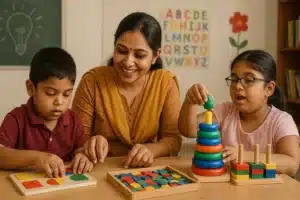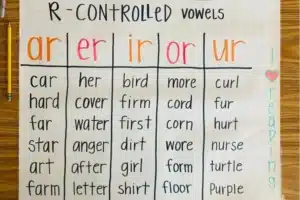
Transform the way children acquire reading skills using Phonics Games for the Classroom and make learning to read fun and interactive for young children. With these games, students understand letters and sounds while staying delighted through play. Teachers usually encounter that incorporating Phonics Games for the Classroom not only boosts reading skills but also promotes confidence and fosters participation. Learning Phonics becomes something students look forward to each day with simple tools and clever Phonics Games for the Classroom.
How to Teach Phonics through Games?
An effective way to keep children engaged while reinforcing letter sounds, word patterns, and blending skills is to Teach Phonics through Games. Phonics Games for the Classroom creates an energetic surrounding and helps students retain what they learn through repetition and motion.
To Download Brochure of Phonics Course, Click Here!
For more details of Phonics Course Call / Whatsapp +919869866277/+919869546913
Here’s how to Teach Phonics through Games and make phonics learning enjoyable and impactful:
Begin with Sound Matching Games
Use pictures or objects that begin with the same sound. Ask students to group items with similar beginning sounds. This strengthens sound recognition.
Incorporate Letter Bingo
Make bingo cards with letters or blends. Call out the sound and have students mark the corresponding letter. This strengthens sound-letter relationships.
Play Blending Relay
Group the class into teams. Give each team phoneme cards and ask them to create words quickly. It promotes teamwork and enhances word formation.
Use “I Spy” with Phonics
Say “I spy something that begins with /l/” and allow students to guess. This sharpens listening and thinking skills.
Introduce Word Family Races
Write word endings like _at or _ig on the board. Students race to list or build as many words as they can in a set time.
Try Phonics Puzzles
Mix up cards with beginning, middle, and ending sounds. Have students match them to form complete words.
Using Phonics Games for the Classroom regularly helps students learn phonics in a stress-free and fun setting. These games promote dynamic learning, support multiple learning styles, and build a robust reading foundation.
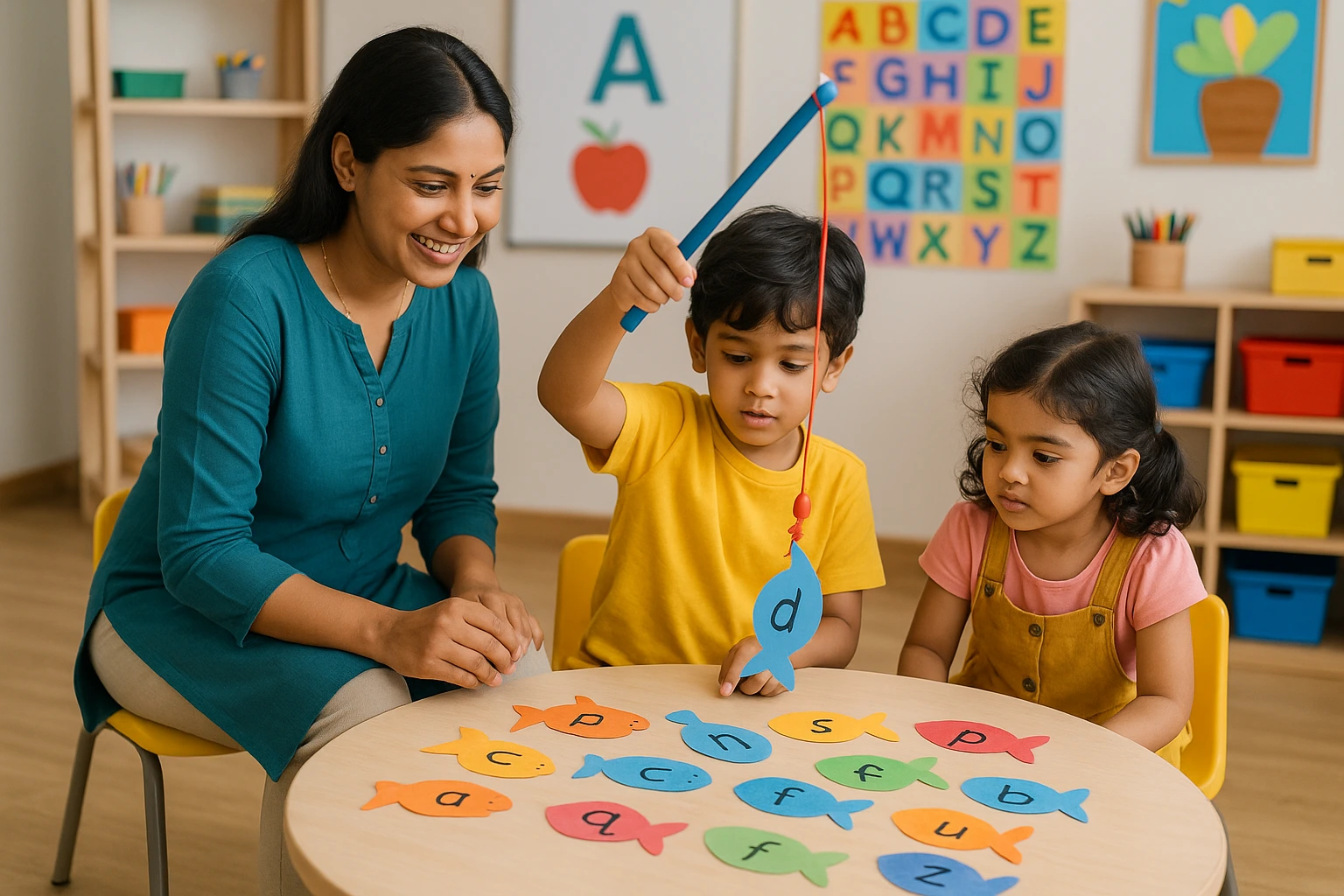
Classroom Phonics Games
Classroom Phonics Games are a clever way to support early reading advancement through fun and structured play. These games help children relate letters with sounds, form words, and boost their reading skills in a dynamic setting. Simple materials and straightforward instructions help teachers easily integrate Phonics Games for the Classrooms into daily lessons.
Here are some effective Classroom Phonics Games:
Alphabet Hopscotch
Sketch letters on the floor or use mats. Call out a sound, and students jump to the correct letter. It builds letter-sound recognition through movement.
Phonics Fishing
Create paper fish with letters or words. Use a magnet fishing rod to “catch” the correct sound or word. This game improves focus and decoding skills.
Sound Sorting
Equip students with images or objects. Ask them to group them based on initial, middle, or ending sounds. It helps develop phonemic understanding.
Blending Ball
Toss a ball around the class. The thrower says a sound and the catcher adds on until a word is formed. This promotes teamwork and word construction.
Memory Match
Design cards with pictures and corresponding word families or beginning sounds. Students find pairs to reinforce recognition.
Guess the Word
Use a whiteboard or flashcards. Say a word slowly and allow students to guess it. This supports listening and blending skills.
Phonics Games for the Classroom not only foster reading ability but also improve morale and class participation. These activities make phonics fun, consistent, and compelling.
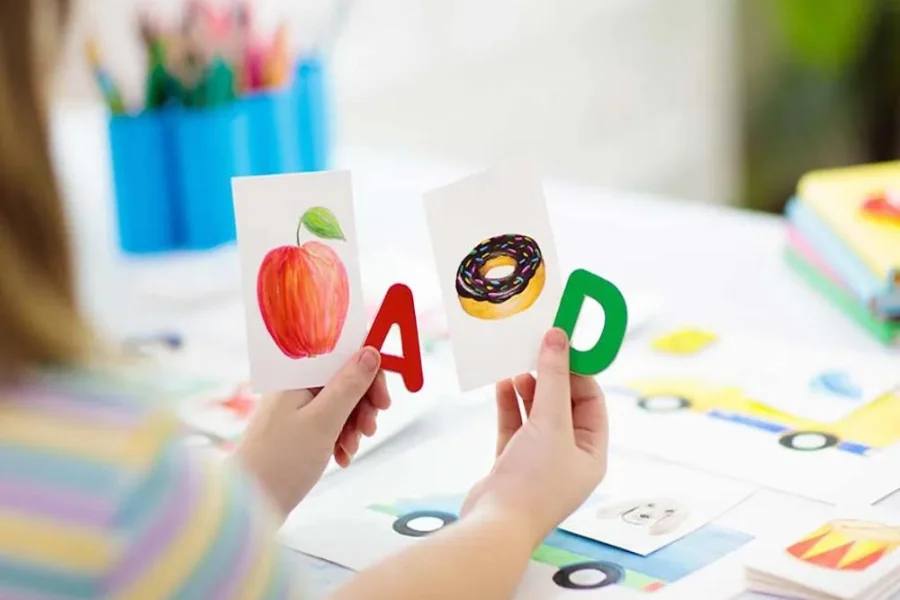
Source: toddlerjunction
Resources for Phonics Games
Discovering the exceptional Resources for Phonics Games for the Classroom can make teaching more productive and enjoyable. These resources support phonics learning by offering practical, engrossing activities that correspond to learning objectives.
Following are some helpful Resources for Phonics Games for the Classroom:
Printable Worksheets
Many websites offer free, downloadable phonics games like word ladders, letter-sound matchups, and bingo cards.
Scholarly Apps
Apps such as Star fall and ABC mouse include interactive games concentrated on phonics skills.
Flashcards and Word Cards
Easily obtainable or teacher-made, these aid quick sound exercises and matching games.
Classroom Kits
Some educational suppliers offer kits with letter tiles, phoneme cards, and activity manuals.
Using these Resources for Phonics Games for the Classroom helps create lessons that are both fun and focused. They support different learning types and make phonics practice easy to organize.
Tips for Effective Phonics Games
Using Resources for Phonics Games for the Classroom effectively requires planning and an unambiguous goal.
The following Tips for Effective Phonics Games ensure that phonics activities support actual learning while preserving students’ interests:
Straightforward Instructions
Use precise and short instructions so children can follow along easily without chaos.
Target Specific Skills
Choose Phonics Games for the Classroom that focus on a distinct word family, blend, or sound, to strengthen one concept at a time.
Use Visuals and Props
Letter cards, graphics, and colorful materials catch attention and help with learning.
Group Children Wisely
Pair students with similar skill levels to preserve a balanced pace and participation.
Limit Game Time
Short game time (10–15 minutes) keeps focus strong and avoids distraction.
Repeat with Variety
Use the same game structure with different sounds or words to build acquaintance and retention.
Following these Tips for Effective Phonics Games for the Classroom makes learning more structured, pleasant, and successful in enhancing reading skills.
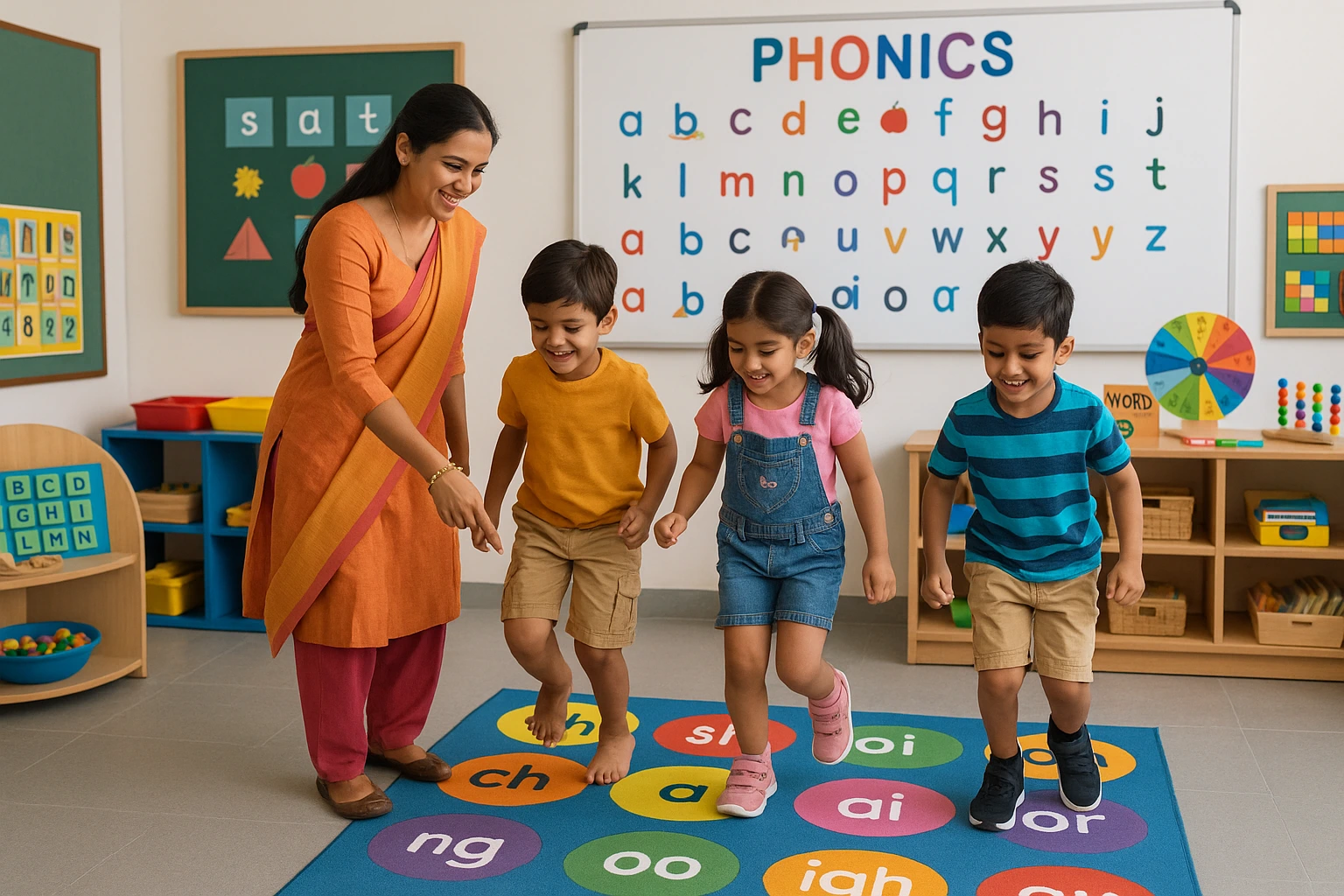
Example of a Phonics Activity
One effective Example of a Phonics Activity is the “Sound Hop” game, designed to build letter-sound recognition through movement. This activity works well in early classrooms and adds energy to phonics learning.
Steps to conduct Sound Hop:
- Write letters or phonemes on floor tiles or paper sheets.
- Call out a sound, and ask students to hop onto the correct letter.
- Gradually increase the difficulty by integrating two or three sounds.
Phonics Games for the Classroom boost listening aptitudes, reinforce phoneme understanding, and keep students delighted. It also supports kinesthetic learners who benefit from movement-related activities.
To master designing and delivering such engaging Phonics Games for the Classroom, teachers can enroll in the Phonics Teacher Training Course offered by Vidhyanidhi Education Society (Govt. Regd.). The Phonics Teacher Training Course helps in acquiring techniques, materials, and methods for designing Phonics Games for the Classroom suitable to all learning styles. By completing the Phonics Teacher Training Course, educators develop the mastery required to make phonics instruction fun and productive.
Empower young minds! Join Vidhyanidhi Education Society’s Phonics Course today!
To Download Brochure of Phonics Course, Click Here!
For more details of Phonics Course Call / Whatsapp +919869866277/+919869546913
FAQs
How is Phonics Taught in the Classroom?
Phonics is taught using letter-sound activities, blending, segmenting, and games to develop reading skills progressively.
How to Practice Phonics?
Practice phonics through flashcards, reading aloud, word formation, sound correspondence games, and short, everyday revision games.
How do you Teach Phonics in a Fun Way?
Use songs, movement games, puzzles, and interactive tools. Vidhyanidhi Education Society’s course trains teachers in fun phonics methods.


